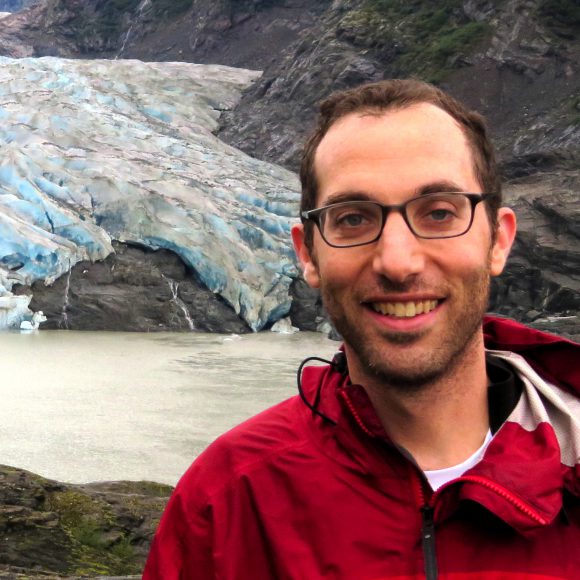
Robert Kopp says keeping global average warming to less than 1.5 degrees Celsius above 19th-century temperatures would require a radical and immediate transformation of global energy and agricultural systems.
Climate scientist Robert Kopp explains the findings of the latest report by the Intergovernmental Panel on Climate Change including the need to achieve net-zero carbon emissions
The United Nations scientific panel on climate change recently released a major report that examined the benefits of trying to limit global warming to 1.5 degrees Celsius above nineteenth-century temperatures and described the consequences of failing to meet that goal. The Intergovernmental Panel on Climate Change (IPCC) concluded that the benefits of limiting global warming to well below the threshold of 2 degrees Celsius – the main target of current international policy – were substantial. However, achieving that objective would require “far-reaching and unprecedented changes in all aspects of society’’ to immediately reverse emissions trends.
Robert Kopp, director of the Rutgers Institute of Earth, Ocean, and Atmospheric Sciences (EOAS) and a professor in the Department of Earth and Planetary Sciences, explains the significance of the report’s conclusions. Kopp is also a lead author of the IPCC’s Sixth Assessment Report, which will be released in 2021.
What are the most important actions the U.S. and other governments need to take if they want to ensure the planet does not exceed a 1.5 degrees Celsius increase?
Keeping global average warming to less than 1.5 degree Celsius (2.7°F) above 19th-century temperatures would require a radical and immediate transformation of global energy and agricultural systems in order to bring global net carbon dioxide emissions close to zero by 2050.
The 1.5°C goal requires either that carbon emissions are cut by about half from current levels over the next 12 years, or that we develop and massively deploy technologies for accelerating the natural removal of carbon dioxide after 2050.
These are both a stretch to say the least.
But, fortunately, climate change is not a binary thing. It’s not the case that 1.4 degrees Celsius of warming is fine but 1.6 degrees is catastrophic. Every incremental increase in emissions leads to an incremental increase in temperature and in the risks that society and ecosystems face. Every bit we do to reduce warming reduces that risk.
I think that focusing too much on temperature targets feeds a counterproductive fatalism. It’s a false but not uncommon idea that if we undershoot a temperature target, we will be safe, and if we overshoot, it will be catastrophic.
I personally hope that the emphasis the IPCC report places on the need for net-zero emissions – which means that emissions from fossil fuels and deforestation would have to be balanced by efforts to accelerate the natural removal of carbon dioxide from the atmosphere – will help drive a shift in climate policy discourse away from temperature targets and toward a focus on how quickly we can get net carbon emissions to zero.
How might New Jersey change in terms of sea-level rise, changes to weather and local ecosystems, and other impacts if the target of 1.5 degrees Celsius is not met?
Of all the risks New Jersey faces as a result of climate change, the impacts of sea-level rise and coastal storms are the greatest. And here the difference between 1.5 degrees Celsius and 2 degrees is small, at least at first. Our work suggests that the difference between 1.5 degrees Celsius and 2 degrees Celsius is a bit over half a foot of sea-level rise between now and 2150. For warming beyond 2.0°C, though, the differences may be much larger – 10 feet of sea-level rise in New Jersey by 2100 is not out of the question in a world of unbridled emissions growth, but in a 2 degree Celsius world, sea-level rise in excess of five feet over the same time scale is extremely unlikely.
How are EOAS faculty and students working on solutions to some of these challenges?
EOAS faculty and students are working on both key aspects of managing climate risk: reducing the amount of warming by helping bring global emissions to net zero and adapting to the changes that we won’t be able to avoid. EOAS scientists are also at the cutting edge of characterizing some of the key risks created by climate change.
For example, on the mitigation side, in partnership with our colleagues at the Rutgers Energy Institute, the Rutgers Center for Ocean Observing Leadership (RU COOL) is helping assess the off-shore wind resources available here in New Jersey. On the impact and adaptation side, in partnership with the Rutgers Climate Institute, Rutgers hosts world-leading research on sea-level change, the impacts of climate on fisheries, and climate risk management. For example, the Coastal Climate Risk and Resilience Initiative is developing a pioneering model for training graduate students to work across disciplines and with stakeholders to make coastal communities more resilient. The Center for Fisheries and Ocean Sustainability is addressing the challenges of managing fisheries in a changing climate while also balancing the competing demands for the use of the ocean. EOAS is also a partner in the Climate Impact Lab, a multi-institutional collaboration on the cutting edge of assessing the economic risks posed by climate change.
Editor’s Note: this article originally appeared in Rutgers Today.

